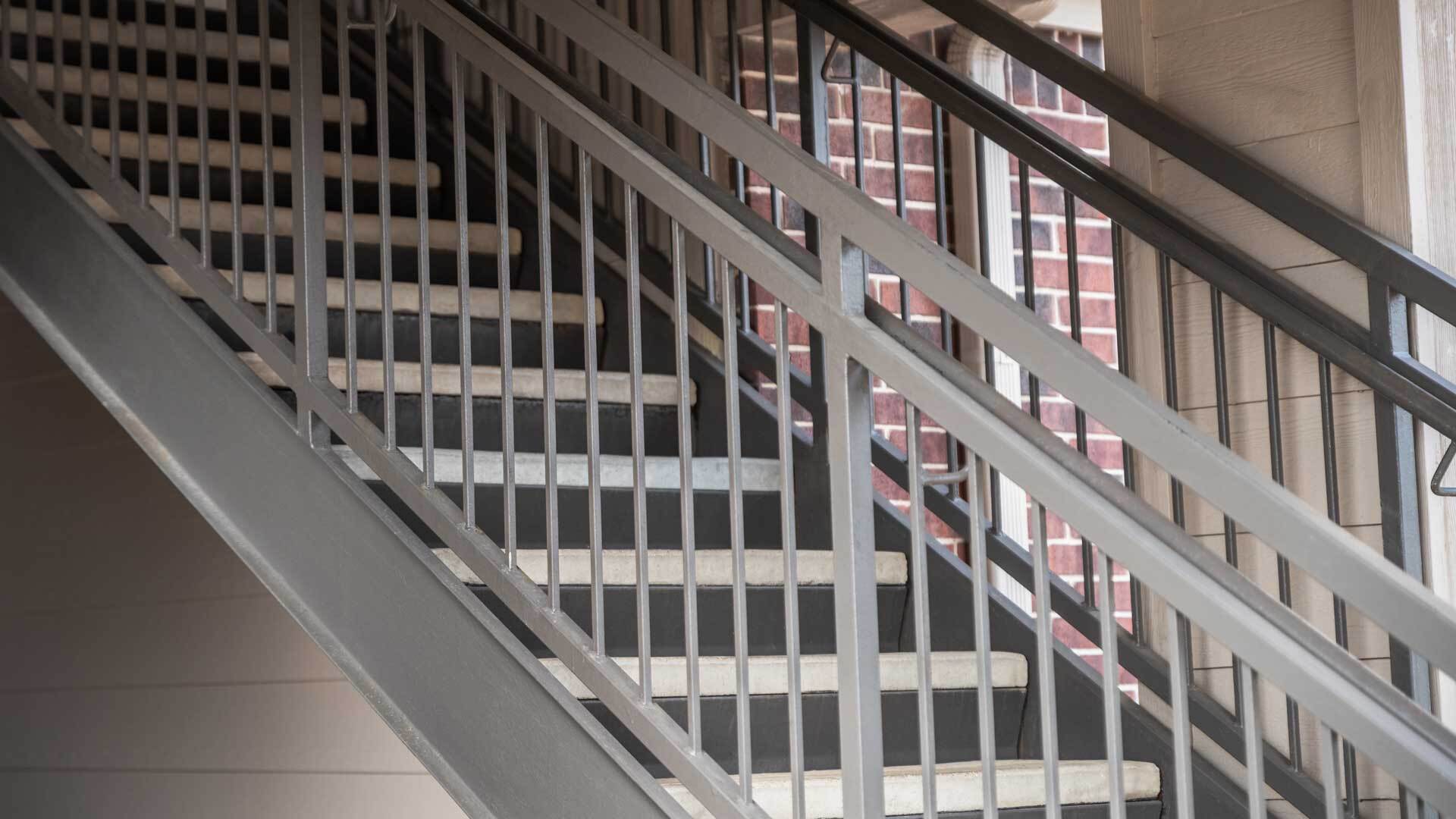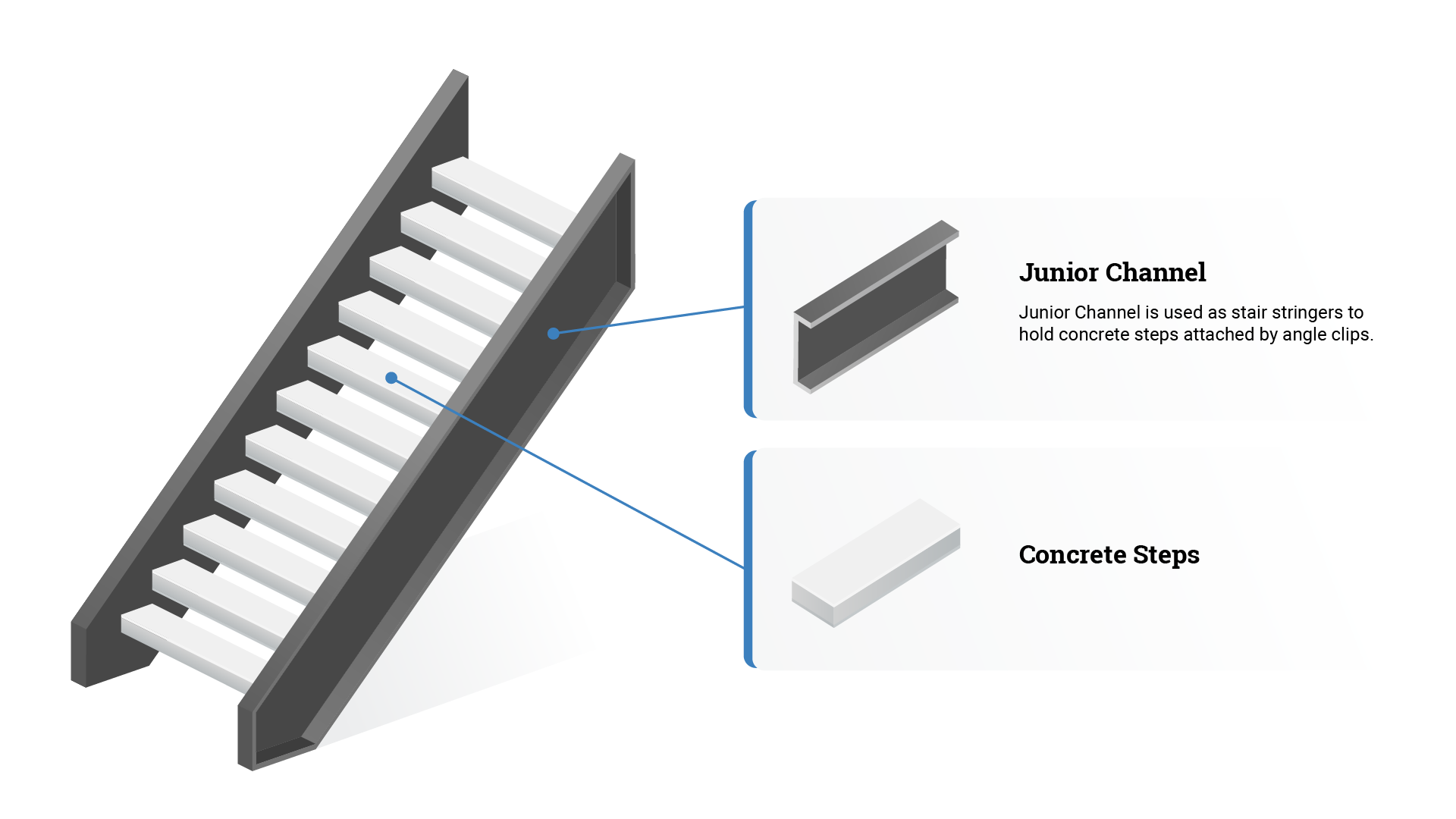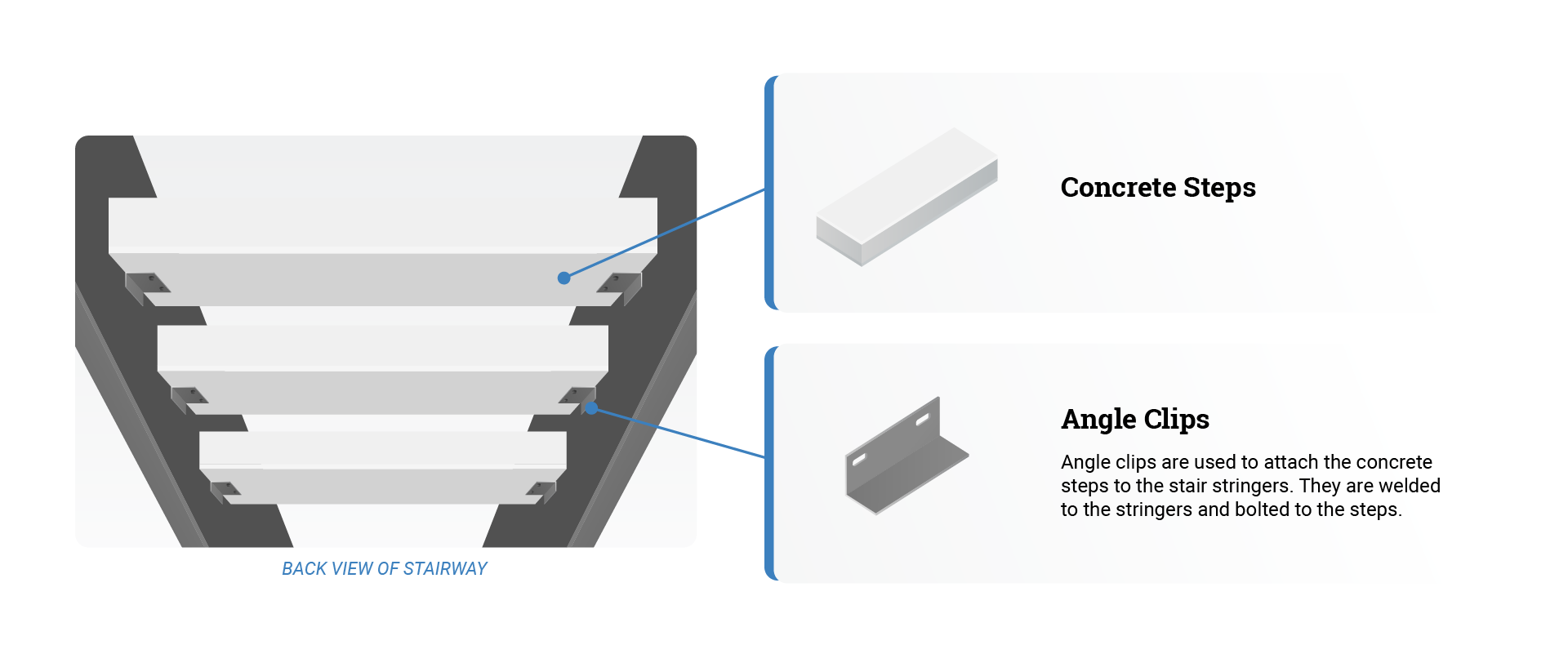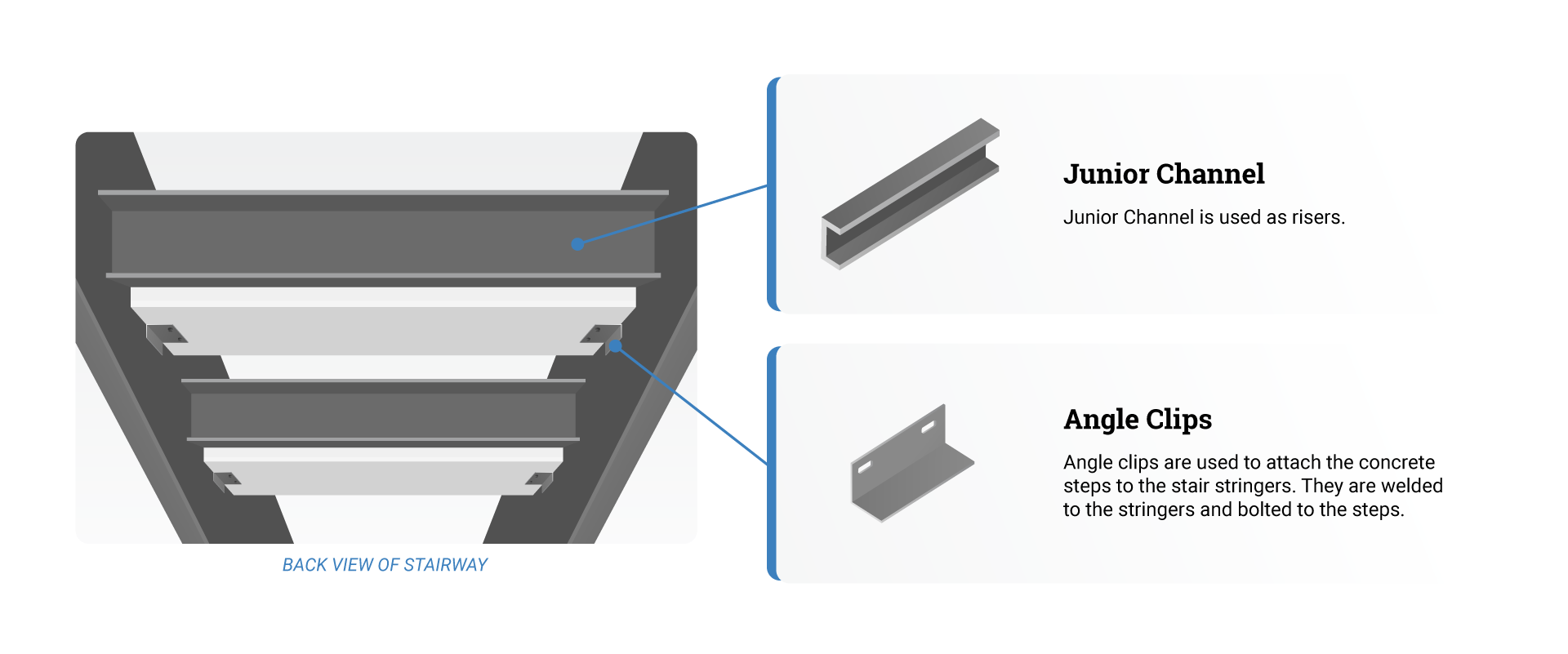Combining Concrete Steps & Angle Clips

Concrete steps provide durable and stable access points in construction, while angle clips reinforce and secure them.
Concrete steps are structural elements typically used in construction. They are concrete, a mixture of cement, water, sand, aggregates and rebar.
Angle clips, also known as angle brackets or L-brackets, are metal connectors that provide additional support, reinforcement, and stability to structures. They are typically shaped like an "L" and made from carbon steel.

Using Concrete Steps and Angle Clips for a Staircase
A staircase with concrete steps and angle clips is a standard design. The concrete steps provide a solid walking surface and are securely attached to the supporting structure, known as stringers, using L-shaped angle clips. The horizontal leg of each angle clip is fastened to a nut on the underside of the concrete tread, while the vertical leg is welded to the stringer.
Why Concrete Steps?
- Resilience to Elements: Concrete steps are highly durable and can withstand harsh weather conditions, heavy foot traffic, and other environmental factors without deteriorating quickly.
- Low Maintenance: Concrete requires minimal maintenance; it does not need frequent painting, staining, or sealing.
- Stable Surface: Concrete steps provide a stable, non-slip surface, reducing the risk of falls and accidents.

The Role of Angle Clips
Using angle clips to secure concrete steps (see diagram above) is a common practice in construction due to several key benefits.
- Securing Staircases: Angle clips secure concrete steps to the supporting framework.
- Load Distribution: Angle clips help prevent stress concentrations by distributing loads evenly across the structure.

Another Common Staircase Variation
Junior channel is commonly used as staircase risers due to their high strength-to-weight ratio and durability (see diagram above). They can bear significant loads while maintaining structural integrity.
Helpful Links
Categories: Cool Stuff